|
Most of the paleontological resources at Black Canyon are from the Jurassic Period and Cretaceous Period. These include fossil plants, invertebrates, vertebrates, and trace fossils. These fossils are part of the park and surrounding area’s geologic story. Paleontological documents and surveys for Black Canyon date back to the 1990s. The following laws protect all fossil found in national parks. Please leave everything you find as it is. 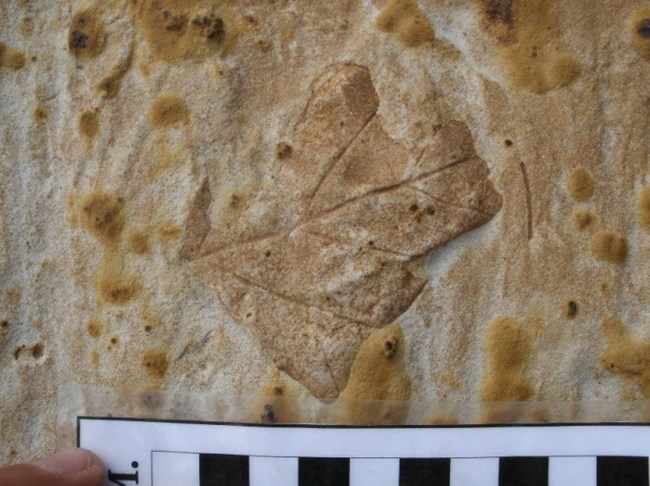
NPS Types of FossilsBecoming a fossil is rare. Fossils require ideal conditions, such as being buried or living in water. Paleontologists find more fossils of small marine organisms instead of larger mammals or dinosaurs.Vertebrate FossilsVertebrate fossils are parts of the body of anything with a backbone (bones, teeth, armor, soft tissue impressions). This includes the dinosaurs that called this area home long ago. Most dinosaur fossils are found where ancient rivers, lakes, and swamps were. Water was able to move enough sediment to bury the dinosaur remains - therefore beginning the fossilization process. Within Black Canyon, only a few body fossils have been found at the park. There is no record of any other large mammal or vertebrate fossils at this time.Plant FossilsPlant fossils can include flowers, trees, stumps, leaves, roots, nuts, cones, needles, stems, twigs, seeds, and pollen. Fossil wood, plant fragments, leaf impressions, and root traces have been found in different sandstone formations at the park.Invertebrate FossilsInvertebrate fossils are fossils from organisms without backbones or a segmented spinal column. This includes animals with internal or external shells, snails, insects, and spiders. These types of fossils are the most encountered in national parks. Black Canyon has invertebrate fossils from both the Jurassic and Cretaceous periods.Trace FossilsTrace fossils are traces of something an animal or plant did during its life. These behaviors or activities are like snapshots of how the animal or plant lived. These types of fossils include footprints and trackways, burrows, marks from feeding, scat (coprolites), and even diseases. There have been a few footprints and burrows found at Black Canyon.Fossil Record at Black CanyonAlthough some formations may not contain paleontological resources at Black Canyon, there may be examples found in the same layer at other national parks. Due to the terrain being heavily eroded or covered with thick vegetation, some typically fossil rich formations cannot be surveyed to the greatest extent.PrecambrianThe oldest exposed rocks at Black Canyon are Precambrian metamorphic and igneous rocks. It is hard to tell what the paleo-environment was like from metamorphic rocks, since they have been changed dramatically over time. These metamorphic processes can squish or destroy fossils. This makes fossils unlikely to be found.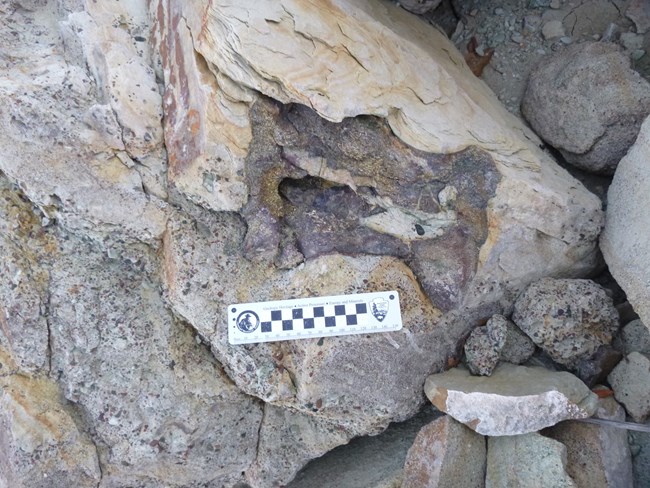
NPS Late JurassicThe Morrison Formation at Black Canyon is divisible into members, such as the Salt Wash and Brushy Basin members. These date back between 155 and 148 mya. This formation is well-known for its fossils. Large dinosaurs such as Allosaurus, Apatosaurus (often called "Brontosaurus"), Brachiosaurus, Diplodocus, and Stegosaurus are well known from the Morrison. Dinosaur bones were first discovered here by uranium prospectors in the early 1950s. More detailed studies began in the 1990s. These revealed various fossil sites across the national park (the monument). 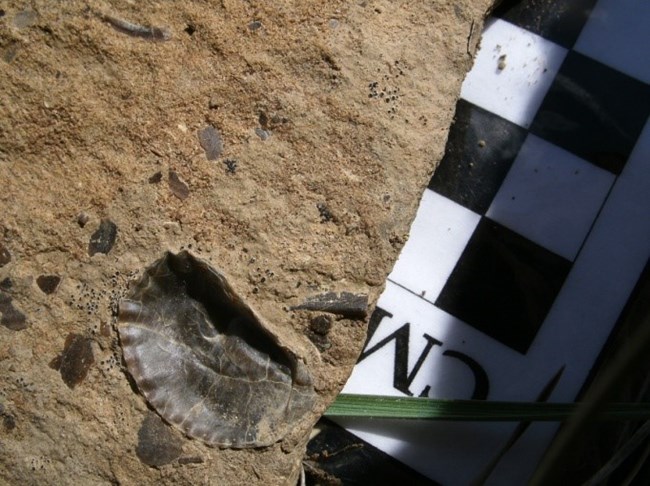
NPS Early to Late CretaceousBurro Canyon Sandstone, Dakota Sandstone, and Mancos Shale are all formations from the Early to Late Cretaceous. The Burro Canyon Sandstone has no recorded fossils in the park. But, the other two formations do. The Dakota Sandstone is made up of sandstone and shale. It is more erosion resistant than the Mancos Shale. Due to this, it is still visible along the canyon rims and uplands. Fossils in this formation are diverse due to a variety of deposition across environments. Fossil wood, plant fossils, leaf impressions, root traces, and invertebrate burrows have been found in the park.Late CretaceousMancos Shale is a clay-rich shale layer with some sandstone and siltstone. It is known for being rich in marine fossils across the Colorado Plateau, even with how fast it breaks down. Within the park, marine invertebrates such as clams, oysters, and ammonites have been found.Stratigraphy and Fossils ChartSome formations/rocks are included to show areas where fossils are improbable or have not found in the park.
More on Geology and Fossils
The Geologic Story
Chapters written across time make up the in-depth story of Black Canyon. 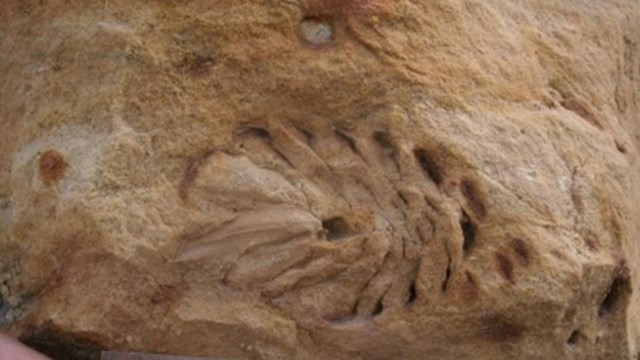
Fossils at Curecanti
Rock formations are similar at Curecanti. Learn about the types of fossils found there. 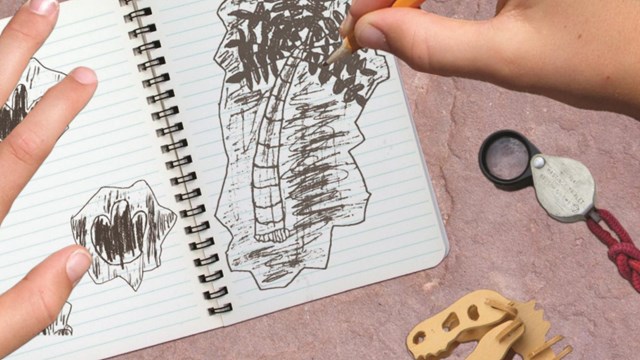
Become a Junior Paleontologist
Explore the ways that paleontologists work, learn about ancient plants and animals, and help protect park resources like fossils. Koch, A. L., Frost, F. and K.C. Trujillo. 2006. Paleontological discoveries at Curecanti National Recreation Area and Black Canyon of the Gunnison National Park, Upper Jurassic Morrison Formation, Colorado. Pages 35-38 in Foster, J. R. and S. G. Lucas, editors. Paleontology and geology of the Upper Jurassic Morrison Formation. New Mexico Museum of Natural History and Science, Albuquerque, NM. Bulletin 36. |
Last updated: April 24, 2025
